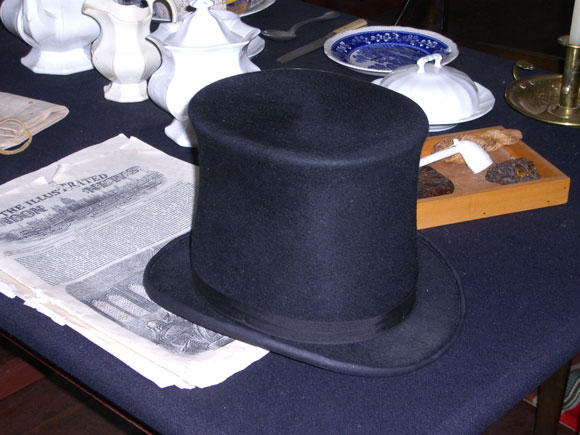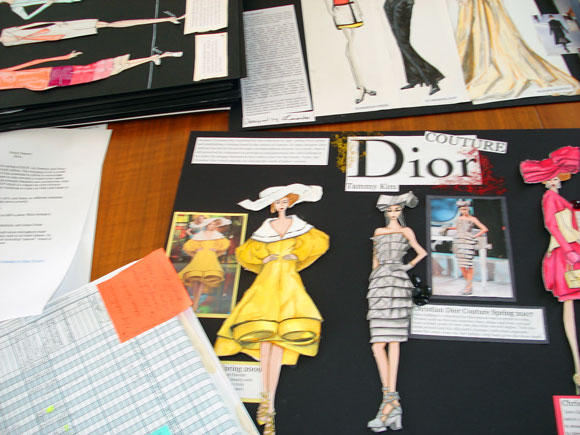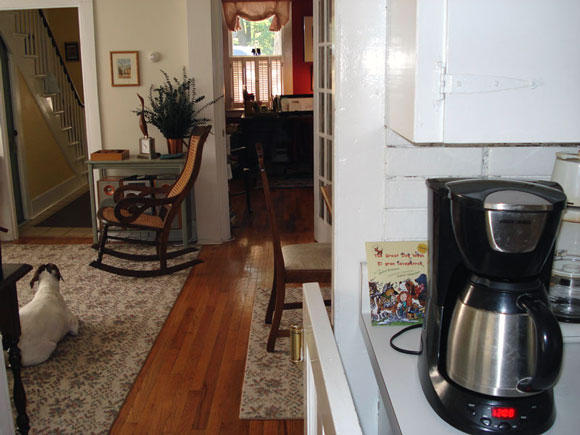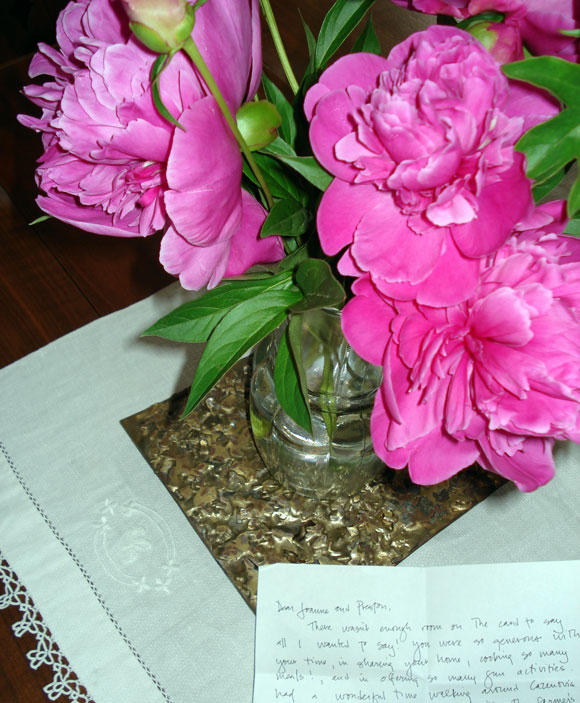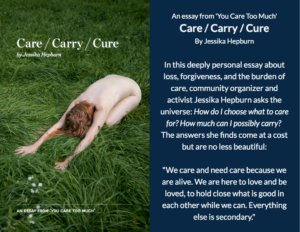by Joanne Gilbert of Drawn to Letters
I live in a hat factory. Seriously. My house was built in 1838 as a hat factory near the village main street. The owner, James Nickerson lived in the larger house next door. They stopped making hats here around 1844 but in May of 1843 J. Nickerson was still putting a small ad in the local paper saying “buying furs at his hat store.” My front door.

It is fun and seems right to be working in a house that was built to make something. Sometimes when I feel that old lament about “wearing too many hats” in my art/life/business I smile at the pun in the historic sign title near front door.

I take creative license with the title and have fun with the fashion reference decorating my front door with a different hat each month. Some were given to me by kind friends, others I owned or bought at estate sales. Many are tongue in cheek (like Santa’s hat or the graduation mortar board cap in June.) None hint at the darker side of hat making in the nineteenth century.

[Photo: top hat, Permission: Creative Commons, Photographer: Themightyquill]
The hats that were made here were most probably fine men’s top hats made from Beaver felt which would have taken advantage of the local beaver trade and local Native American traders. European hat makers had driven their Beaver population extinct in the 1800’s but America and Canada picked up on the trade opportunity. It seems the beaver top hat was replaced by the silk top hat in the Victorian 1850’s and that was probably a good thing.
I have only been living here for 11 of my house’s 173 years and goodness knows what was made here in between. I like to think that I have added some new layers to the making of things within these walls. I have taught drawing or fashion illustration to design students, grading piles of projects on my dining room table and prepping demonstrations and drawings for class here.

Now I am illustrating and making cloth books, cards and prints in the old hat factory.

I make old unfinished sketchbooks and resources live here.

And I make new ideas live here with way too many sticky notes.

I am comforted by making lots of coffee beside a sweet old dog.

I am proud to mix the peonies made in this garden with my great grandmother’s hand embroidered and tatted table linen and my son’s recently hand welded and braised brass tile.

Heck, I have even made a few hats here—albeit from store bought yarn.
But here’s the hard reality of 1843 and 2011 for makers. Everything has changed and nothing has changed. As I romanticize the connection to small artisans of bygone days, please consider such luxuries as UPS delivery, internet communication and global sourcing. (The term “mad as a hatter” was coined from real life sad truth of making hats from beaver pelts in Europe, Canada and America.) The unregulated early materials and methods used by the hat makers in 1843 (link below) will leave you shocked and humbled at the ease of our new multitasking lives as makers and sellers. It is hard to believe that anyone could bear up under the grit and poison of the process required and I am blessed that the floors here have long since been replaced.
On the other hand, a scan of advertisements in that same 1843 newspaper shows me that just like our new handmade business experience there was a lot of struggle, failure and new competition among artisans. In a village of 3,000 there were 2 tailors, a boot maker, a coffin/cabinetmaker, woolen factory, and a book bindery/book seller. A new boot and shoe shop, a new bookstore, and a new partnership called “Giraffe Recess”(?!) replacing 3 shops that were closing or “selling at cost.” Then there was a jeweler, a seller of “Pectoral Syrup” which sounds sexy, and my favorite, a “house, sign, fancy and ornamental painting, graining, glazing and paperhanging” business.
When our days are long and our money short, it is helpful to know that many makers came before us taking time and trouble with their work. And just as we hope for our products, a felt hat was a prized item to be used and treasured for many years. What is the history of making where you live? Where do your raw materials come from now?
Join me on facebook at Drawn to Letters. If you want to know a bit more about the poisonous, scalding, tedious process of making a finished top hat, click here. My local paper has been archived in 2004 by a kind historian named Daniel Weiskotten.



